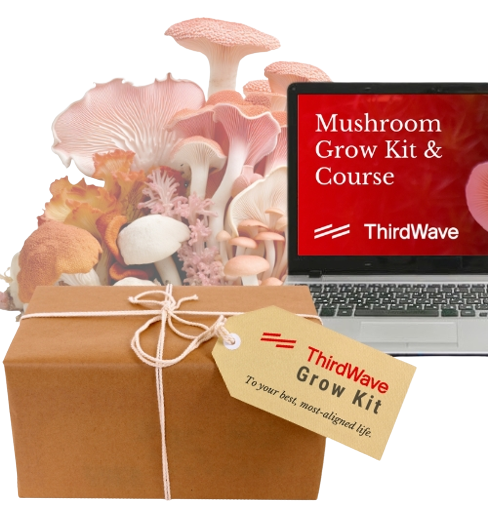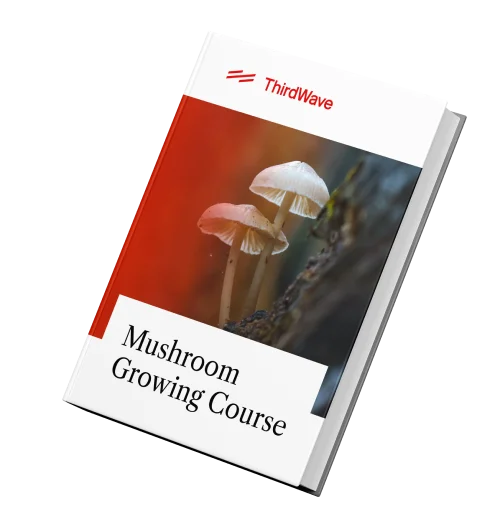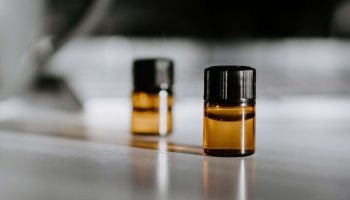A recent article in the New York Times, penned by clinical psychiatrist Richard Friedman, attempts to scare his audience into thinking that LSD might not be a good treatment for depression, despite a barrage of recent studies suggesting otherwise. Friedman appears to be of the opinion that it would be wrong to offer these drugs to sufferers of disease; even though there is no evidence of harm from LSD or psilocybin when given in a clinical setting, and despite the growing body of evidence of the efficacy of these drugs in treating mental health conditions.
Friedman himself mentions the debilitating nature of depression; between a third and one-half of all patients will never find relief from conventional treatments. Hundreds of millions suffer worldwide, and hundreds of thousands commit suicide every year. Most of those sufferers don’t have access to the expensive treatments most commonly handed out by psychiatrists in the developed world.
We would expect that any psychiatrist would be ecstatic to hear of the recent findings that suggest psychedelics could be a more effective treatment for depression than any currently available medication, with no apparent long-term negative side-effects and without the need for repeat doses. Not to mention, psychedelics such as psilocybin are available in nature, meaning they could be available to everyone, instead of just a privileged few.
Surprisingly, Friedman is not enthused by the results. Instead, he launches into a criticism of one of the recent studies of psilocybin’s effectiveness in treating anxiety associated with terminal illness.
CRITICISMS OF A RECENT PSILOCYBIN STUDY
Friedman states that the study, by Stephen Ross and colleagues at NYU, has “serious design flaws that cast doubt on the results”. He critiques the small number of participants, the crossover design, and the use of an active placebo.
However, the study by Ross and colleagues is impeccably good science considering the restrictions in place on the study of schedule I drugs in the US. The study recruits 29 participants, which is substantial when you consider the cost can be thousands of dollars for a single dose of the drug for each patient. Of course, larger sample sizes would be preferable, but researchers are limited in the current drug policy climate.
The critique of the crossover design (whereby patients act as their own controls, being given psilocybin in one session and active placebo in another at random) is similarly harsh. When scientists are so heavily restricted in the study of schedule I drugs, they have to make compromises in their design. Scientists use crossover designs like this one in many trials, and although not ideal, are the best we have under the circumstances. The alternative, giving one group of people a treatment and one group a placebo, has already been performed with psychedelics, and still supports their efficacy in the treatment of depression.
“The cost of a single dose of a schedule I drug can be thousands of dollars per patient.”
Because psilocybin has such dramatic psychological effects, the researchers knew that participants would easily be able to tell whether they’d been given the drug or a placebo – so they used an ‘active’ placebo instead, a drug called niacin. Niacin makes you feel dizzy and warm, thereby doing a better job of masking the effects of psilocybin than an inactive placebo would. Yet it’s not good enough for Friedman, who states that participants will still be able to tell which treatment was the placebo. Although he’s right, it’s impossible to fully control for the psychological effects of a psychoactive drug – especially a psychedelic drug. The only other option (which Friedman doesn’t mention) would be giving participants two different doses of the same drug – thankfully, another group from Johns Hopkins has already performed this type of study, and the results still show the efficacy of psychedelics in treating depression.
For all this critiquing, Friedman doesn’t think it’s worth bringing up the amazing results of the study by Stephen Ross and colleagues. A single dose of psilocybin dramatically and significantly reduced the participants’ depression and anxiety scores compared to niacin, and these reductions were maintained for weeks after the treatment. The findings are unprecedented in psychiatric terms – no other treatment for depression has produced such striking positive results. Considering Friedman is well aware of the devastating effects of depression, it’s surprising that he isn’t interested in discussing the potential benefits of psychedelics that have been brought up by this and other research.
CRITICISM OF MICRODOSING
After critiquing this recent research, Friedman discusses the emerging trend of microdosing – the act of taking tiny amounts of psychedelics every few days – as popularized by Ayelet Waldman’s book A Really Good Day (click here for our interview with Ayelet).
Friedman’s lack of knowledge about the practice of microdosing becomes abundantly clear as he warns that microdosers “cannot be sure what or how much they are actually taking”. This is fundamentally untrue – a myriad of testing kits are available online for the avid microdoser to test the contents and purity of their drugs. Alternatively, they could send their substances to an international laboratory that provides high-quality analysis of any and all compounds.
Friedman worries that people may take a huge dose of LSD when they only meant to take a little. Although this could happen when microdosing with LSD tabs (which can potentially be laid unevenly), any competent microdoser will measure out their LSD volumetrically by dissolving the tabs in water, or microdose with known quantities of psilocybin mushrooms. Friedman’s lack of knowledge demonstrates the importance of proper education regarding psychedelic use – before anyone microdoses, they should be aware of the basic facts or join a microdosing community so they are totally prepared for the experience.
Although it’s true that we don’t know much about the risks of microdosing, we know a lot about the benefits. Ignoring these positives just reinforces prejudice – the same prejudice that the drug-using community has been facing for decades, and that Third Wave is working to eliminate by providing extensive psychedelic education and resources.
Grow 1 Year's Worth of Microdoses in Just 6 Weeks
Third Wave partnered with top mycologists to create the world’s easiest and best mushroom growing program (kit, course, and expert support).
- Pre-sterilized and sealed
(ready to use out of the box) - Step-by-step video and text course
- Access to growing expert in community
- Make your first harvest in 4-6 weeks
- Average yield is 1 - 4 ounces (28-108g)
- Fits in a drawer or closet
- Enter info for Third Wave discounts:


Grow 1 Year's Worth of Microdoses in Just 6 Weeks
Third Wave partnered with top mycologists to create the world’s easiest and best mushroom growing program (kit, course, and expert support).
- Pre-sterilized and sealed
(ready to use out of the box) - Step-by-step video and text course
- Access to experts in community
- Make your first harvest in 4-6 weeks
- Average yield is 1 - 4 ounces (28-108g)
- Fits in a drawer or closet
- Enter info for Third Wave discounts
WARNINGS OF NON-EXISTENT DANGERS
Friedman’s main argument for us to be cautious about psychedelics is “We just don’t know.” While it’s true that we don’t know about the hidden harms of psychedelics, this is a very unhelpful statement. There could be hidden harms behind a huge number of very beneficial behaviors: for example, we have a convincing array of anecdotal evidence to suggest that parachutes are useful when falling out of an airplane, but we still don’t know about their potential hidden harms because there has never been a double-blind, randomized, placebo-controlled trial of their effectiveness. Likewise, everyone who has been eating five portions of fruit and veg every day may suddenly all drop dead from some very specific form of vitamin poisoning. Telling people to stop eating fruit and veg, or to jump out of airplanes without parachutes, based on a fear of hidden harms, is clearly an inane thing to do.
Although we can never know with absolute clarity whether there are significant harms associated with psychedelic use, we’re pretty damn confident that there aren’t. Many native peoples have used psychedelics for millennia without any associated harms. For the past fifty years, psychedelics have been used (and abused) without any apparent large-scale, long-term downsides. An absolute flood of recent scientific research has not produced one instance of serious harm from psychedelics administered responsibly in a clinical environment.
“Telling people to stop eating fruit and veg, or to jump out of airplanes without parachutes, based on a fear of hidden harms, is clearly an inane thing to do.”
The statement that “Bad trips and flashbacks occur with some frequency in recreational users” reveals that Friedman doesn’t want to mention the statistics – only around 5% of people who take psychedelics experience anything resembling flashbacks, and it’s mostly in the form of mild, non-traumatic visual phenomena that fade rapidly. If psychedelics are taken responsibly, with control over set and setting (as is done in clinical studies), we can minimize the occurrence of long-term visual effects.
Even in the worst circumstances, with repeated high-dose administrations of psychedelics to patients with previous mental health problems (as was done in 1960s Denmark), relatively few long-term harms can be attributed directly to the psychedelics themselves.
Friedman brushes off findings like these by saying that they’re either short-term clinical studies or surveys based on self-reporting. However many of these “short-term” clinical studies have follow-ups years down the line and still produce no evidence of harm. Additionally, although self-reporting surveys aren’t ideal, they’re the best way of screening the largest possible number of drug users and turn up scant evidence of long-term harm from psychedelic use.
Friedman says that “There is little question from clinical experience that psychedelics can be behaviorally toxic”. This is a vague statement and doesn’t tell us anything. If Friedman means that people use psychedelics as part of their daily lifestyle, then the same goes for things like coffee, sex, work and just about anything else you can think of.
The argument “we just don’t know yet” simply falls flat. If psychedelics did possess seriously harmful properties, we would know by now. What we do know, with considerable certainty, is that psychedelics can benefit people who suffer from some of the most debilitating mental conditions in the world.
SCIENTISTS AREN’T WORKING HARD ENOUGH
The ‘pathological paradigm’ is a condition caused by the current state of our prohibitive drug policy (we discuss it in detail with Dr. Stephen Bright here). It means that scientists are restricted from researching potentially therapeutic drugs that have no established medical value. But there is no established medical value because the drug has not been researched due to its prohibition. It’s a catch-22 holding back medical progress and restricting patients from life-saving treatments.
We’d expect that a clinician like Friedman would be quick to criticize the pathological paradigm and stand against any situation that prohibited scientific advancement. However, according to Friedman, Stephen Ross and similar researchers simply aren’t trying hard enough to research their schedule I drugs – Friedman points to the example of researchers looking at another schedule I drug, cannabis, without too much apparent difficulty.
Firstly, this is entirely ignoring the differences between cannabis and psilocybin. Although they’re both schedule I drugs, it’s easier (although still prohibitively difficult) for researchers to get their hands on cannabis compared to psilocybin. Research on psilocybin is relatively rare compared to research on marijuana compounds and has to be supplied by specialist companies.
Secondly, just because some researchers are managing to get by despite the pathological paradigm does not mean that everything is fine. Research is being held back by drug policy, and that should be the issue here.
THE COCAINE ARGUMENT
Friedman brings up a point that will frustrate many people familiar with psychedelics. He likens the popularity of cocaine in the 70s and 80s with the popularity of psychedelics now, and mentions that people were unaware of the dangers of cocaine in a similar way that we are unaware of the dangers of psychedelics.
Not only does this show that Friedman has no clue what he’s talking about (the differences between psychedelics and cocaine are monumental), he is also absolutely wrong. There was clear evidence, as early as 1968, that cocaine had addictive potential. There was also convincing evidence, even from small studies, that cocaine possessed cardiovascular toxicity.
Whether or not people listened to the evidence at the time (the availability of scientific findings to the public has changed a lot since the 70s) is irrelevant to the argument about psychedelics. If psychedelics were toxic in any way, even in the long term, we would know about it by now. Cocaine use spiked in the 70s and 80s, and scientists immediately discovered its toxicity. Psychedelic use has been around for millennia in traditional settings, and for half a century in the modern world, and there is no evidence of harm – certainly nowhere near the level of damage that can be caused by cocaine.
FRIEDMAN’S STANCE IS WRONG, IMMORAL AND HARMFUL
Friedman closes his article by stating that he thinks psychedelics will find more use in the investigation of altered states of consciousness. This is mind-boggling to me. Friedman believes that psychedelics have hidden harms, which makes them unsuitable to give to people suffering from untreatable depression, but nevertheless thinks that they are fine to give to willing participants in studies of consciousness? What kind of a bizarre line in the sand is that?
Sure, we don’t fully understand psychedelics. I admit that. But we understand them enough to know that they are a potential treatment. We understand that we should not deny them to suffering people.
Are the potential dangers of psychedelics honestly worse than the harms of depression? I find that hard to imagine. I think we can conclusively say that it is immoral to withhold these potentially highly effective, and almost certainly harmless, substances from people in need.
Can microdosing help you change habits, enhance creativity, and optimize performance? Perhaps it’s time to find out for yourself. Third Wave’s Microdosing Course integrates the feedback of 3,000+ participants and the latest research from cutting-edge scientists and doctors to help you tailor your routine to meet your personal goals.
Curious about supporting your mental health through psychedelics? Check out Third Wave’s vetted directory of psychedelic therapists.








Apparently, Friedman is OK with crossover design so long as the molecules being tested aren’t psychedelic. This quote from another piece he wrote on Depakote and brain plasticity is made in support of the results:
“After a few weeks, subjects who received the placebo were switched to valproic acid and vice versa for a second training period. In this way, each subject served as his own control, getting both drug and placebo.”
From: https://www.nytimes.com/2016/10/09/opinion/return-to-the-teenage-brain.html
“Friedman’s lack of knowledge about the practice of microdosing becomes abundantly clear as he warns that microdosers “cannot be sure what or how much they are actually taking”. This is fundamentally untrue – a myriad of testing kits are available online for the avid microdoser to test the contents and purity of their drugs. Alternatively, they could send their substances to an international laboratory that provides high-quality analysis of any and all compounds.”
I think the idea behind Friedman was that when lsd is dropped onto the square paper that people call a tab it can be unevenly dispersed into the tab. So if you were to cut off a 1/16 corner of the tab you might not get anything at all and if you cut a 1/16 from the center of the tab you could get a more potent dose than desired. So it is hard to make sure you are micro-dosing correctly.
Yes, there are much resources on the internet that can inform you about techniques on how to make sure you have the same dose every time.
For instance: microdosing.nl for Dutch people
Also: Friedman’s comparison of this age with the age of cocaine shows a lack of historical dept, the current period is clearly better characterised as a reliving of the 60s. Ok, a time with a lot of different perspectives, but if we want to know about the possible toxicity or addictive potential of psychedelics it might make more sense to look to a period in which there was use and check out the hospital files for LSD addiction and toxicity, compared to the estimated amount of people who have used it.
That’s data, right? Low estimation to hight estimation, check those results.